| Dimensions | 120 mm |
|---|---|
| Focal Length (mm) | |
| Max Aperture (f) | |
| Aperture Blades | |
| Elements | |
| Rear Mount | |
| Front Thread |
Leica Elmarit-P2 120/2.8
Black polycarbonate-barrel slide projector lens. Multicoated. Probably same optical formula as Elmarit-P: reflections and bokeh suggest triplet, but certainly three-group.
Category: Slide Film
Reviews
Add a review Cancel reply
Related to . . .
Related products
-

Agfa Agomar 100/2.5 [V2]
Compare -

Agfa Agolar 85/2.5
Compare -

Aldis Anastigmat 85/2.5 [V1]
Compare -

Benoist Berthiot 90/2.5
Compare -

Bell & Howell Trionar 100/3.5
Compare -

Ansco 127/3.5
Compare -

Agfa Agomar 70-120/2.8
Compare -

Apollo 100-150/3.5
Compare -
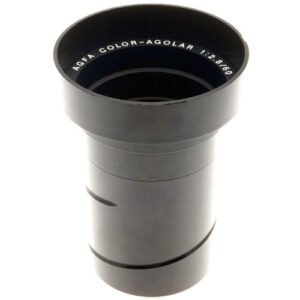
Agfa Color-Agolar 60/2.8
Compare -

Agfa Color-Agolar 85/2.8
Compare -

Pentacon AV 150/2.8
Compare -

Braun Color-Autogon 85/2.8
Compare -

Aldis Uno 200/4.5
Compare -

Argus Projection 100/2.8
Compare -

Pentacon AV 200/4
Compare -

Agfa Variomar 80-125/3.1
Compare -
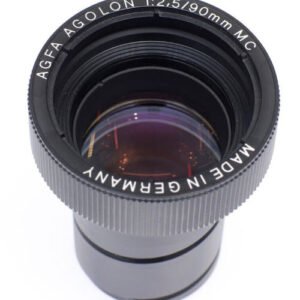
Agfa Agolon 90/2.5
Compare -

Bell & Howell Trionar 127/4
Compare -

Aldis Projection 100/3.2
Compare -
 SOFT
SOFTAgfa Agomar 90/2.8
CompareSOFT -

Benoist Berthiot 60/1.6
Compare -
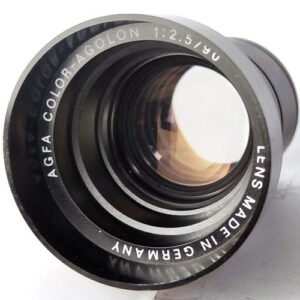
Agfa Color-Agolon 90/2.5
Compare -

Benoist Berthiot 75/2.8
Compare -

AG Optical Trionar 152/3.5
Compare -

Appro 100-225/4
Compare
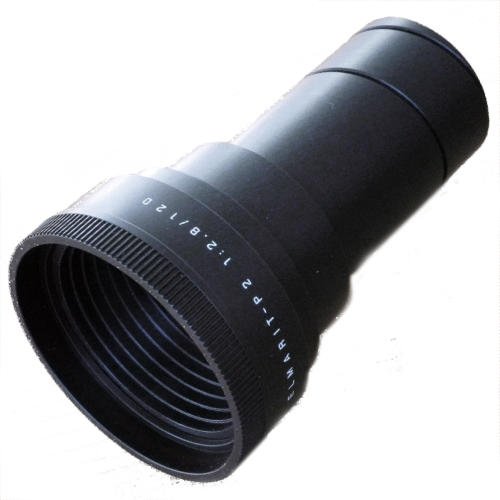




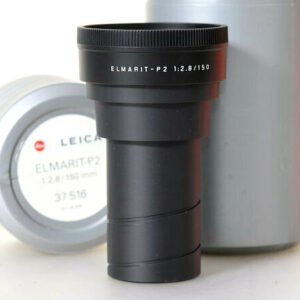

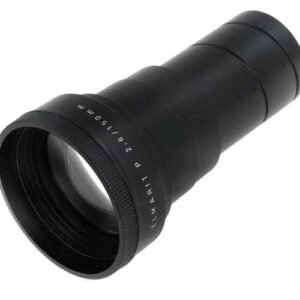
16:9 –
The legacy of the Leica 120mm projector lens stretches back to the original Hektor. It is likely that this Elmarit-P2 version is unchanged from the P-mount version. It was certainly redesigned for the metal-barrel Elmarit-Pro. A distinct trio of reflections confirms this is a three-group lens – perhaps no more exotic than a stock air-spaced triplet – a conjecture supported by its notably bubbly bokeh, quite unlike the Colorplans or its 150mm sibling, which are (respectively) clearly, and slightly, sharper. The vagueness around its construction signals not only Leica’s close-fisted stance on releasing production information about their projector lenses, but the equally locked-down construction of these plastic ‘monocoque’ optics that have no visible threads, tool notches, or otherwise apparent means of disassembly. It feels like you’d really have to break one to repair one. On the plus side, sealing the cells like this ensures that you rarely come across an Elmarit-P2 with internal dust or fungus.
Rendition is smooth, with rather more glow, or spherical aberration, than you might expect from Leica glass of the 1990’s. It’s understandable why Leica were keen to completely redesign this lens for the release of the Ektapro-compatible RT and RT-m series.